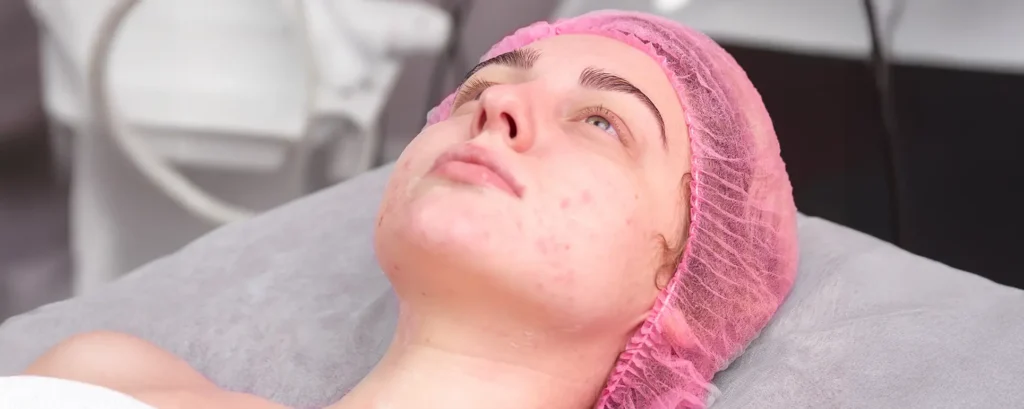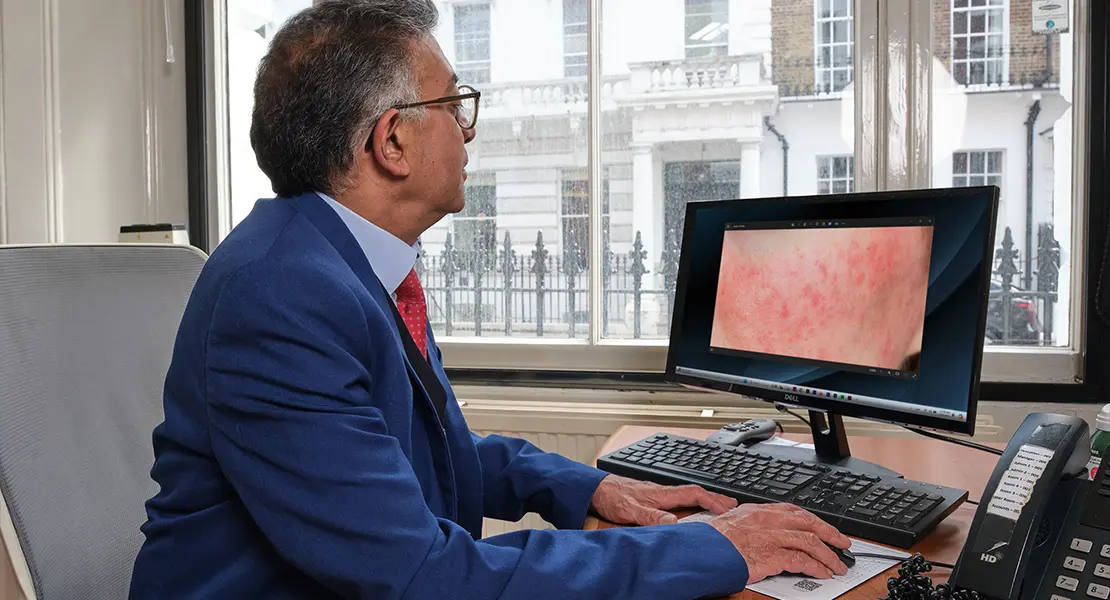If you’ve ever noticed redness, flushing, or bumps on your nose, you may have wondered whether these early signs are harmless or something more concerning. For many, the question becomes particularly pressing when considering rhinophyma a condition that can dramatically change the appearance of the nose over time. The good news is that while rhinophyma cannot always be completely prevented, early and consistent management of rosacea can significantly reduce the risk of progression. In this guide, I want to walk you through the early warning signs of rosacea, treatments recommended by dermatologists, lifestyle factors that can influence progression, and how proactive care can help protect your nasal tissue over the long term.
Understanding the relationship between rosacea and rhinophyma is the first step towards prevention. Many people assume that rhinophyma is caused by alcohol or lifestyle choices, but this is a misconception. Rhinophyma is a phymatous subtype of rosacea, a chronic inflammatory skin condition. By identifying rosacea early and managing it carefully, you can often maintain the health and appearance of your nose and reduce the likelihood of developing rhinophyma.
Understanding Rhinophyma and Its Connection to Rosacea
Rhinophyma is characterised by thickened, bumpy, or enlarged nasal tissue. It develops slowly over years and is most common in men over the age of 50. It is not caused by alcohol consumption, although alcohol can exacerbate rosacea flare-ups. Instead, rhinophyma arises from a combination of factors including genetic predisposition, vascular changes, inflammation, and overgrowth of sebaceous (oil) glands.
Rosacea, the underlying condition, often begins much earlier. It may appear as:
- Persistent facial redness
- Flushing after heat, exercise, or emotional stress
- Small visible blood vessels (telangiectasia)
- Acne-like bumps or pustules
Recognising and treating rosacea early is crucial because rhinophyma typically develops in individuals who have had long-standing, uncontrolled rosacea. Early intervention can reduce inflammation, prevent gland overactivity, and maintain healthy skin texture.
Early Warning Signs of Rosacea to Watch For

Not all cases of rosacea progress to rhinophyma, but early recognition is key to prevention. Here are the signs you should be mindful of:
2.1 Persistent Redness or Flushing
Unlike temporary blushing, rosacea-related redness tends to linger. If your nose appears red even when you’re relaxed or in a cool environment, this is an early sign.
2.2 Bumps and Pustules
Rosacea may cause small, acne-like pimples. These are not the same as typical acne, as they often appear in combination with redness and inflammation rather than blackheads or whiteheads.
2.3 Visible Blood Vessels
Tiny, thread-like vessels can become visible, particularly on the nose and cheeks. This is a sign that vascular changes are occurring, which can contribute to tissue thickening if untreated.
2.4 Skin Sensitivity
If your facial skin feels unusually sensitive, stings, or burns when applying skincare or after sun exposure, this can indicate underlying rosacea inflammation.
2.5 Dry or Rough Skin
Over time, rosacea can lead to skin thickening and textural changes even before rhinophyma appears. Noticing rough or slightly thickened skin early allows for timely intervention.
Dermatologist-Recommended Early Treatments

Managing rosacea proactively is the cornerstone of preventing progression to rhinophyma. Dermatologists typically recommend a combination of topical, oral, and procedural therapies, tailored to the severity of your symptoms.
3.1 Topical Treatments
Topical medications help reduce inflammation, redness, and bacterial activity on the skin. Common options include:
- Metronidazole cream or gel – reduces inflammation and lesions
- Azelaic acid – helps control redness and bumps
- Ivermectin cream – targets inflammatory lesions and mites associated with rosacea
Applying these consistently as prescribed can significantly decrease flare-ups and reduce the risk of tissue changes in the nose.
3.2 Oral Medications
For moderate to severe rosacea, oral medications may be advised. These include:
- Doxycycline or minocycline – low-dose antibiotics reduce inflammation
- Isotretinoin – in selected cases, helps control severe or resistant symptoms
Oral medications work systemically, addressing inflammation throughout the skin, not just in the affected areas.
3.3 Laser and Light-Based Treatments
Procedures like pulsed dye laser or intense pulsed light (IPL) therapy target visible blood vessels and reduce persistent redness. These treatments are not only cosmetic; they can also minimise vascular changes that contribute to tissue thickening.
3.4 Regular Monitoring
A key part of prevention is follow-up. Dermatologists may use dermoscopy or photographic monitoring to track subtle changes in nasal tissue. Early detection of any thickening allows for prompt intervention before rhinophyma develops.
Lifestyle Factors That Influence Rosacea Progression
Managing rosacea isn’t just about medication. Lifestyle choices can play a significant role in controlling symptoms and preventing rhinophyma.
4.1 Avoiding Common Triggers
Some triggers are well-known to exacerbate rosacea:
- Spicy foods and hot beverages
- Alcohol consumption
- Extreme temperatures (hot showers, saunas, cold wind)
- Stress and emotional triggers
Keeping a diary of flare-ups can help identify personal triggers and guide lifestyle adjustments.
4.2 Sun Protection
UV exposure is a major contributor to rosacea flares and skin damage. Daily use of broad-spectrum sunscreen and protective clothing helps prevent flare-ups and protects tissue integrity.
4.3 Gentle Skincare Routine
Harsh scrubs, alcohol-based toners, and strong exfoliants can worsen rosacea. Opt for mild cleansers, moisturisers suited for sensitive skin, and non-comedogenic products.
4.4 Healthy Diet and Hydration
Anti-inflammatory foods, adequate hydration, and limiting processed foods can help maintain overall skin health. While diet alone doesn’t prevent rhinophyma, it supports effective treatment.
The Role of Early Intervention in Preventing Rhinophyma
Early and consistent management of rosacea can significantly reduce the likelihood of developing rhinophyma. Here’s how proactive care helps:
- Reduces Chronic Inflammation: Persistent inflammation drives tissue overgrowth. Treating rosacea early limits this process.
- Minimises Sebaceous Gland Hyperactivity: Medications can control oil production, preventing pore enlargement.
- Maintains Skin Texture: Early treatment preserves the smoothness and elasticity of nasal skin.
- Protects Facial Confidence: By preventing visible changes, you can avoid the emotional and social impact of a changing nose.
While not all cases of rhinophyma can be prevented particularly in individuals with strong genetic predispositions early care improves outcomes and can make eventual treatments simpler and more effective.
How to Recognise Early Nasal Changes
Even with early rosacea management, some individuals may notice subtle changes in the nose. Knowing what to look for allows for timely consultation with a dermatologist.
6.1 Slight Thickening
The skin may feel a bit firmer or spongy compared with the rest of the face. This is often the first structural sign.
6.2 Enlarged Pores
Sebaceous glands may start to enlarge, making pores more visible. This is a subtle but important indicator.
6.3 Minor Surface Bumps
Small nodules or uneven textures can appear before significant enlargement occurs.
6.4 Gradual Shape Changes
You may notice a slowly changing contour, such as a slightly drooping tip or broadening of the nostrils. These changes usually take years to progress but warrant evaluation.
When to Seek Specialist Assessment
Even with careful management, some cases may require expert evaluation. Consider seeing a dermatologist if you notice:
- Persistent redness or flushing despite treatment
- Thickening or textural changes in nasal skin
- Enlarged pores or bumps
- Changes in nasal shape or symmetry
- Flare-ups that are increasingly difficult to control
If you’re in London, exploring options for Rhinophyma treatment in London can provide you with personalised advice and early intervention strategies. A specialist can assess risk, suggest tailored treatment, and monitor progression to protect your skin and nasal structure.
Long-Term Management Strategies
Prevention is an ongoing process. Successful long-term management includes:
- Regular Dermatology Check-Ups: Even when rosacea is under control, routine visits help identify early changes.
- Consistent Skincare and Medication Use: Adhering to prescribed treatments reduces flare-ups.
- Trigger Avoidance: Lifestyle adjustments remain important over the years.
- Monitoring Photos: Comparing current photos with older ones can reveal subtle changes unnoticed day-to-day.
By combining medical treatment, lifestyle management, and proactive monitoring, you can significantly lower the risk of rhinophyma progression.
Emotional and Social Considerations
Living with rosacea or the early signs of rhinophyma can impact self-esteem. Many people feel self-conscious about facial redness or changes in nasal shape. Early management not only protects physical health but also emotional well-being. Feeling in control of your skin condition can reduce anxiety, improve confidence, and help maintain social comfort.
Myths About Rhinophyma and Rosacea Prevention
Understanding the facts helps prevent misinformation and unnecessary worry:
- Myth 1: Alcohol causes rhinophyma – False. Alcohol triggers flushing but does not cause tissue overgrowth.
- Myth 2: Rhinophyma develops overnight – False. It progresses slowly over years.
- Myth 3: Only men get rhinophyma – False. Women can develop it, though less commonly.
- Myth 4: Skincare alone can prevent rhinophyma – False. Medication and specialist care are essential.
- Myth 5: Natural remedies replace dermatology care – False. Evidence-based treatment is necessary for prevention.
FAQs:
1. What exactly is rhinophyma, and how is it related to rosacea?
Rhinophyma is a condition characterised by thickened, bumpy, or enlarged tissue on the nose. It is a phymatous subtype of rosacea, which is a chronic inflammatory skin condition. While rosacea primarily causes redness, flushing, visible blood vessels, and acne-like bumps, rhinophyma develops as a long-term consequence in some individuals, particularly men over 50. The progression occurs due to a combination of factors, including chronic inflammation, sebaceous gland overactivity, and vascular changes in the skin.
2. Can rhinophyma be completely prevented?
While it is not always possible to prevent rhinophyma entirely, especially for those with a genetic predisposition, early and consistent management of rosacea can significantly reduce the risk of progression. Identifying rosacea symptoms early and adhering to prescribed treatments, coupled with lifestyle adjustments, can help maintain the skin’s texture and prevent excessive tissue overgrowth.
3. How can I tell if my rosacea is at risk of progressing to rhinophyma?
Early signs of rosacea that may indicate a higher risk of rhinophyma include persistent facial redness, frequent flushing, small visible blood vessels, acne-like bumps, and increased skin sensitivity. Subtle changes in skin texture, such as roughness or slight thickening, may also suggest that early intervention is necessary. Individuals with a family history of rhinophyma should be especially vigilant.
4. Are there treatments that can reduce the risk of developing rhinophyma?
Yes, several dermatologist-recommended treatments can help manage rosacea and reduce the risk of rhinophyma. Topical medications such as metronidazole, azelaic acid, and ivermectin help control inflammation, redness, and lesions. In moderate to severe cases, oral medications like doxycycline or low-dose isotretinoin may be prescribed to reduce systemic inflammation. Laser and light-based therapies, including pulsed dye laser and IPL, can minimise vascular changes and persistent redness, further protecting the skin from thickening.
5. Do lifestyle factors really impact the progression of rosacea to rhinophyma?
Lifestyle factors play an important role in controlling rosacea symptoms and preventing rhinophyma. Triggers such as spicy foods, alcohol, extreme temperatures, and emotional stress can exacerbate redness and inflammation. Sun protection is also crucial, as UV exposure contributes to flare-ups and skin damage. Maintaining a gentle skincare routine, staying hydrated, and eating an anti-inflammatory diet support overall skin health and help optimise treatment outcomes.
6. How can I monitor my skin to catch early nasal changes?
Monitoring your skin involves observing subtle changes in the nose over time. Early indicators include slight thickening, enlarged pores, minor surface bumps, and gradual changes in the shape of the nose. Taking periodic photos, noting any flare-ups, and keeping track of changes in redness or texture can help you identify potential concerns early. Regular dermatologist check-ups also provide professional monitoring and early detection of tissue changes.
7. When should I seek specialist assessment for my nose or rosacea?
You should consider seeing a dermatologist if redness or flushing persists despite treatment, if there are changes in nasal skin thickness or texture, if pores appear larger, or if the nose’s shape starts to change. Additionally, flare-ups that are difficult to control or become more frequent warrant a specialist consultation. Early assessment allows tailored treatment and may prevent further progression.
8. Are men more likely to develop rhinophyma than women?
Although rhinophyma is more common in men, women can also develop the condition, albeit less frequently. Hormonal differences and sebaceous gland activity may partly explain this disparity, but the underlying risk factors, such as long-standing rosacea and genetic predisposition, can affect anyone. Therefore, early rosacea management is important for both men and women.
9. Can rhinophyma be treated if it has already developed?
Yes, rhinophyma can be treated once it has developed, though early intervention generally yields better outcomes. Surgical and procedural options, such as laser resurfacing, dermabrasion, or electrosurgery, can reduce tissue overgrowth, reshape the nose, and improve cosmetic appearance. Post-treatment care and ongoing rosacea management remain essential to prevent recurrence and maintain skin health.
10. Are natural remedies or skincare products enough to prevent rhinophyma?
While gentle skincare, moisturisers, and avoiding triggers are helpful, natural remedies alone are not sufficient to prevent rhinophyma. Evidence-based treatments prescribed by dermatologists, including topical or oral medications and procedural interventions, are essential for effectively controlling rosacea and reducing the risk of tissue thickening. Combining medical treatment with lifestyle management provides the most reliable approach to prevention.
Final Thoughts: Protecting Your Nose with Early Rosacea Care
If you’re concerned about your nose changing shape, redness, or texture, I hope this guide has given you both clarity and reassurance. While rhinophyma cannot always be fully prevented, early recognition and consistent management of rosacea can significantly reduce your risk. By monitoring subtle changes, adhering to dermatologist-recommended treatments, and avoiding known triggers, you can protect your nasal tissue and maintain your confidence.
The key takeaway is this: you don’t have to wait to see visible changes before seeking help. A specialist assessment provides personalised guidance, early intervention, and peace of mind. If you’re in London, you can explore options for Rhinophyma treatment in London and receive expert advice on managing rosacea proactively.
Our team at the London Dermatology Centre offers personalised care, including early intervention strategies, monitoring, and treatment to maintain the health and appearance of your skin. If you’re considering Rhinophyma treatment in London, you can contact us at the London Dermatology Centre to book a consultation with one of our specialists.
Reference:
1. Manfredini, M., Barbieri, M., Milandri, M. & Longo, C. (2025) ‘Probiotics and Diet in Rosacea: Current Evidence and Future Perspectives’, Biomolecules, 15(3), 411. Available at: https://www.mdpi.com/2218-273X/15/3/411
2. Galluccio, G., et al. (2024) ‘Advances in the Pathogenesis and Treatment of Rosacea’, Cosmetics, 11(1), 11. Available at: https://www.mdpi.com/2079-9284/11/1/11
3. Rainer, B. M., et al. (2017) ‘Rosacea: Epidemiology, pathogenesis, and treatment’, Journal of Clinical and Aesthetic Dermatology, 10(5), pp. 23–34. Available at: https://pmc.ncbi.nlm.nih.gov/articles/PMC5821167/
4. Laun, J. (2015) ‘Rhinophyma’, Dermatology and Therapy, 5(1), pp. 85–90. Available at: https://pmc.ncbi.nlm.nih.gov/articles/PMC4426765/ 5. Chauhan, R., et al. (2020) ‘Rhinophyma: Prevalence, Severity, Impact and Management’, American Journal of Clinical Dermatology, 21, pp. 803–812. Available at: https://pmc.ncbi.nlm.nih.gov/articles/PMC7429105/
